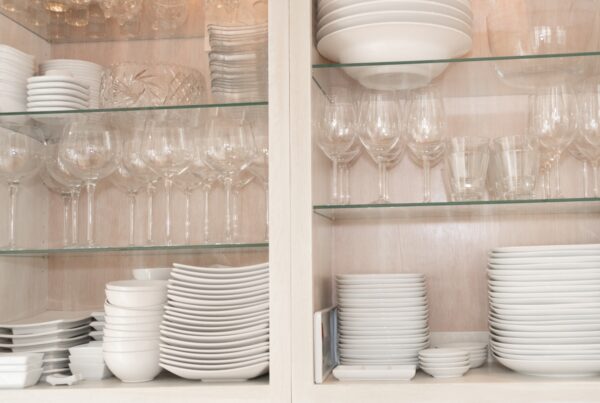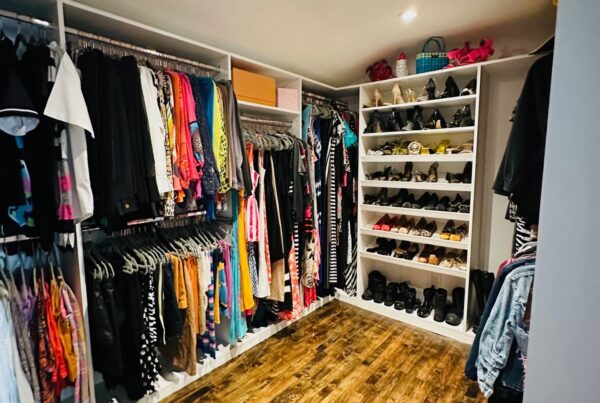 You know the feeling. You walk into your home office and see the mountain of papers threatening to topple from your desk. Or you open your closet and clothes practically spill out at you. The garage has become a no-go zone, and don’t even get started on that spare room that’s somehow become a catch-all for everything you don’t know what to do with.
You know the feeling. You walk into your home office and see the mountain of papers threatening to topple from your desk. Or you open your closet and clothes practically spill out at you. The garage has become a no-go zone, and don’t even get started on that spare room that’s somehow become a catch-all for everything you don’t know what to do with.
As a busy professional, you understand the value of organization. You know it would save time, reduce stress, and probably even boost your productivity. But here’s the problem: the sheer magnitude of these organizing projects feels overwhelming. Where do you even begin? The all-or-nothing mindset kicks in, and suddenly you’re either planning to dedicate an entire weekend to the task (which never seems to happen) or you’re avoiding it altogether.
There’s a smarter way.
The Myth of the Marathon Organizing Session
Many professionals fall into the trap of thinking they need a massive block of uninterrupted time to make meaningful progress on organizing projects. This “weekend warrior” approach rarely works for several reasons. First, by the time you have that elusive free weekend, the problem has grown even larger. Second, marathon organizing sessions are mentally and physically exhausting, often leading to poor decisions about what to keep, donate, or discard. Finally, this approach doesn’t create sustainable habits—it’s a one-time event rather than a system.
The reality is that sustainable organization happens through consistent, small actions over time, not through heroic weekend efforts.
The Power of Micro-Steps
The most effective organizing projects start with what productivity experts call “micro-steps”—actions so small they seem almost insignificant but compound over time into remarkable results. For busy professionals, this approach offers several advantages:
Time Efficiency: You can make progress in the time it takes to drink your morning coffee or during a brief break between meetings. These small pockets of time are available even in the busiest schedules.
Reduced Decision Fatigue: When you’re only tackling a small area, you make fewer decisions, which means better choices about what stays and what goes. Your mental energy remains sharp throughout the process.
Momentum Building: Small wins create psychological momentum. Each completed micro-step provides a sense of accomplishment that motivates you to take the next small action.
Lower Stress: There’s no pressure to transform an entire space in one go. This reduces the anxiety that often prevents people from starting in the first place.
The Strategic Starting Point
The key to success lies in choosing your starting point strategically. Resist the urge to tackle the most problematic area first. Instead, select a space that meets three criteria:
- High Visibility: Choose an area you see frequently—your desk, kitchen counter, or entryway. Daily visual reinforcement of your progress maintains motivation.
- Quick Wins: Select a space that will show noticeable improvement within 15-20 minutes. This might be clearing just the surface of your nightstand or organizing one desk drawer.
- Daily Impact: Focus on areas that affect your daily routine. When you improve spaces you interact with regularly, you’ll immediately feel the benefits.
The 15-Minute Rule
Set a timer for just 15 minutes and commit to working on your chosen micro-area for that duration only. This time constraint serves multiple purposes: it makes the task feel manageable, prevents perfectionism from slowing you down, and often you’ll find yourself continuing beyond the timer because you’ve built momentum.
During these 15 minutes, follow a simple three-step process:
Sort: Quickly separate items into keep, donate, and trash piles. Don’t overthink—go with your gut instinct.
Assign: Give every “keep” item a specific home. If it doesn’t have a designated place, create one.
Reset: Return items to their assigned homes and do a quick visual scan of your progress.
Building the System
Once you’ve successfully completed several micro-organizing sessions, you’ll notice something powerful happening: you’re not just organizing spaces, you’re building a habit. The key is consistency over intensity. It’s better to spend 15 minutes organizing three times per week than to attempt a three-hour session once per month.
Consider linking your organizing time to an existing habit. Perhaps you spend 15 minutes organizing after checking your morning emails, or you tackle a small area while waiting for your coffee to brew. This habit-stacking technique makes the new behavior more likely to stick.
Measuring Success Differently
Redefine what success looks like. Instead of measuring progress by completely transformed rooms, celebrate the small victories: a clear desk surface, an organized junk drawer, or a tidy car console. These incremental improvements compound into significant change over time.
The beauty of this approach is that it works with your busy schedule, not against it. You’re not waiting for the perfect moment to start—you’re creating small, perfect moments throughout your week. Each micro-step moves you closer to the organized, efficient environment that supports your professional success and personal well-being. Tidy and Talk is another great way to great an hour of virtual organizing in a small group setting once a month.
Start today. Choose one small area. Set the timer for 15 minutes. Begin.







